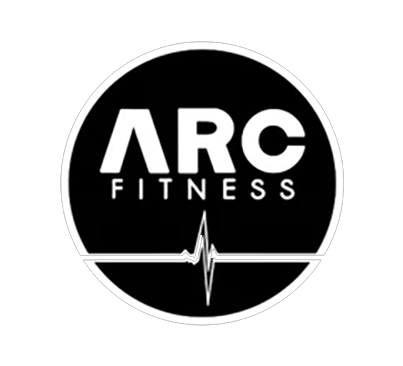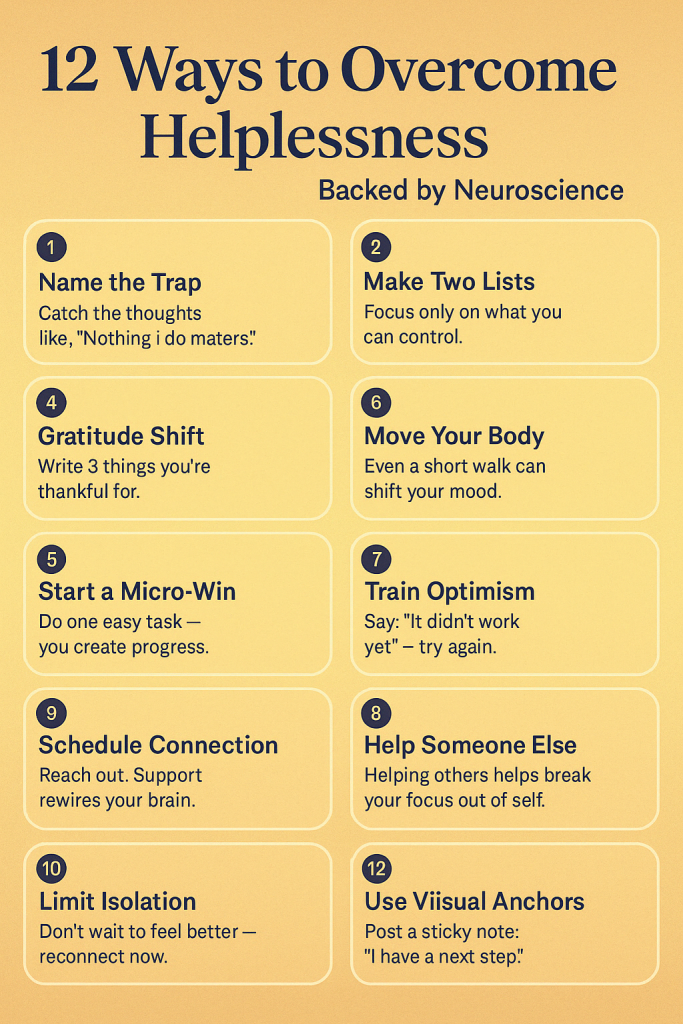No products in the basket.
Uncategorized
12 Neuroscience-Backed Ways to Overcome Helplessness
12 Neuroscience-Backed Ways to Overcome Helplessness
Helplessness is a state we all face at some point, especially in addiction recovery or during periods of mental health struggle. It’s that heavy, paralysing feeling that nothing you do will make a difference. But neuroscience says otherwise. Your brain is built to change, adapt, and heal. You just need the right tools to nudge it in the right direction.
In recovery, helplessness can be especially dangerous. It fuels relapse risk, keeps people isolated, and erodes the motivation needed to stay engaged in the process of change. That’s why it’s so important to recognise that helplessness is not a fixed state—it’s a signal. And once you understand how to respond to that signal, everything can start to shift.
Here are 12 powerful, evidence-backed strategies to help you regain control, rewire your thinking, and reclaim momentum:
1. Name the Trap
Catch yourself in the act of saying, “Nothing I do matters.” These automatic thoughts are mental traps—patterns your brain repeats out of habit. Naming the thought reduces its grip. Say it out loud, or write it down: “This is a helplessness loop.” That awareness alone disrupts the cycle.
2. Make Two Lists
Separate what you can control from what you can’t. Write it down. Visualising it helps your brain see what’s actionable. Then focus your energy only on the first list. Even one small action in the “can control” column can start shifting your state from stuck to engaged.
3. Reframe the Narrative
Instead of asking, “Why is this happening to me?” try, “What’s one small thing I can do today?” This subtle shift activates the prefrontal cortex—your problem-solving, forward-thinking brain. You’re not dismissing the difficulty; you’re reclaiming agency inside it.
4. Gratitude Shift
Write down three things you’re thankful for every day. Even small things count: clean clothes, fresh air, a text from a friend. Gratitude isn’t denial—it’s direction. It teaches your brain to look for what’s working, and that changes your perception over time.
5. Move Your Body
Even a short walk can alter your neurochemistry. Physical activity boosts dopamine and serotonin levels, improves mood, and helps break the inertia that helplessness thrives on. You don’t need to run a marathon—just move. Five minutes. Ten reps. One deep stretch.
6. Start a Micro-Win
Do one small, easy task. Make your bed. Wash one dish. Send one email. These micro-wins signal to your brain that you can act. They restore your sense of control, and each small success makes the next one more likely.
7. Train Optimism
Say it out loud: “It didn’t work yet—try again.” The word yet is key. It helps your brain reframe failure as feedback, not finality. Optimism isn’t toxic positivity. It’s the belief that action can still make a difference.
8. Schedule Connection
Helplessness loves isolation. Connection is medicine. Message a friend, call someone you trust, or join a group. Your brain rewires in the presence of supportive people. You don’t need to overshare—just being around people who care changes your state.
9. Help Someone Else
Acts of kindness activate reward centres in the brain. Helping others reminds you that you matter and that you can make an impact. Even something small—like holding a door or sending a kind message—can restore meaning and momentum.
10. Limit Isolation
Don’t wait until you “feel better” to reach out. That moment may never come on its own. Isolation deepens helplessness. Flip the script: reconnect first. Join a community class, show up to a group, or just get around people.
11. Use Visual Anchors
Leave simple reminders in visible spots. A sticky note that says “I have a next step” or “Keep going” can act as a neurological cue. It grounds your attention and interrupts the loop of helpless thinking with a prompt toward action.
12. Track Progress
Check off your wins. No matter how small. Each tick sends a clear message to your brain: progress is happening. Use a journal, whiteboard, or app. Seeing your momentum in black and white builds belief, and belief builds action.
Final Thoughts
You’re not stuck. Your brain isn’t broken. With the right inputs, your nervous system can shift from freeze to flow. At ARC Fitness, we encourage our community to use these tools daily because transformation starts with the small stuff.
If you’re ready to move from helpless to hopeful, start here. One action. Then another. Let the momentum build.

